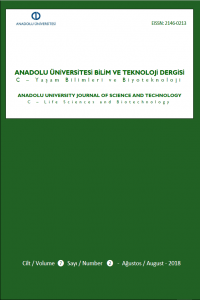Öz
In this study, Eskişehir city and its
environment were defined as a study area and wild plants consumed as food in
this region were selected as research material. According to the study, 28 wild
plants consumed as food around Eskişehir were determined. These plants were
identified as Amaranthus retroflexus
(Kızılbacak), Beta corolliflora (Kır
Pancarı), Capsella bursa-pastoris
(Çoban Çantası), Carduus nutans
(Devedikeni), Centaurea urvillei
(Çoban Çökerten), Chenopodium album
(Sirken), Cichorium intybus
(Karakavuk), Erodium cicutarium
(Çoban İğnesi), Galega officinalis
(Keçisakalı), Glaucium corniculatum
(Boynuz Gelincik), Lactuca serriola
(Acı Marul), Malva neglecta
(Ebegümeci), Nasturtium officinale
(Su Teresi), Papaver rhoeas
(Gelincik), Papaver somniferum
(Haşhaş), Polygonum lagathifolium
(Madımak), Portulaca oleracea
(Semizotu), Ranunculus ficaria
(Arpacıksalebi), Raphanus raphanistrum
(Turpotu), Rumex acetosa
(Kuzukulağı), Rumex crispus (Labada),
Silene alba (Toklubaşı), Stellaria media (Bulgurcuk), Taraxacum officinale (Acıgüneyik), Tragopogon dubius (Yemlik), Tragopogon pratensis (Teke Sakalı), Urtica dioica (Büyük Isırgan) and Urtica urens (Küçük Isırgan). The
findings of this study have revealed that the wild plants are an important
alternative to well known agricultural products and have important potential
for the realization of sustainable rural development.
Anahtar Kelimeler
Edible Plants Nutrition Sustainable Development Eskişehir Turkey
Kaynakça
- [1] Yücel E, Unay N. Çifteler ilçesinde gıda olarak tüketilen yabani bitkilerin tüketim biçimleri ve besin öğesi değerleri. 2008, Cetemenler, Eskişehir.
- [2] Yücel E, Güney F, Şengün İY. The wild plants consumed as a food in Mihalıççık district (Eskişehir/Turkey) and consumption forms of these plants. Biological Diversity and Conservation 2010; 3(3): 158-175.
- [3] Halıcı N, Mevlevi Mutfağı, ISBN: 9789944018807, 2007, Metro Kültür Yayınları, İstanbul, pp. 269.
- [4] Berk E, Restoran İşletmelerinde Ürün Demetleme Uygulaması Olarak Set Menülerin Yabancı Turist Algılamalarına Etkileri. Journal of Tourism and Gastronomy Studies 2005a, 1(2): 52-58.
- [5] Berk E, Ege Mutfağı, ISBN: 9789759227531, 2005b, Troya Yayıncılık, İstanbul, pp 112.
- [6] Şenol D, Kızınız Defneyi Oğlumuz İskorpite, 2010, İstanbul: Yapı Kredi Yayınları.
- [7] İnaltong T, Tak Koluna Sepeti: Bodrum Pazarlarından Tatlar, Renkler, Portreler, ISBN: 9799753294101, 2003, Oğlak Yayıncılık, İstanbul.
- [8] İnaltong T, Mutfaktaki Yaban: Anadolu’nun Yenen Otları, ISBN: 9789750815157, 2008, Yapı Kredi Yayınları, İstanbul, pp 432.
- [9] Kaya İ, İncekara N, Nemli Y, Ege Bölgesi’nde Sebze Olarak Tüketilen Yabani Kuşkonmaz, Sirken, Yabani Hindiba, Rezene, Gelincik, Çoban Değneği ve Ebegümecinin Bazı Kimyasal Analizleri. Yüzüncü Yıl Üniversitesi, Ziraat Fakültesi, Tarım Bilimleri Dergisi (J. Agric. Sci.) 2004, 14: 1-6.
Öz
Kaynakça
- [1] Yücel E, Unay N. Çifteler ilçesinde gıda olarak tüketilen yabani bitkilerin tüketim biçimleri ve besin öğesi değerleri. 2008, Cetemenler, Eskişehir.
- [2] Yücel E, Güney F, Şengün İY. The wild plants consumed as a food in Mihalıççık district (Eskişehir/Turkey) and consumption forms of these plants. Biological Diversity and Conservation 2010; 3(3): 158-175.
- [3] Halıcı N, Mevlevi Mutfağı, ISBN: 9789944018807, 2007, Metro Kültür Yayınları, İstanbul, pp. 269.
- [4] Berk E, Restoran İşletmelerinde Ürün Demetleme Uygulaması Olarak Set Menülerin Yabancı Turist Algılamalarına Etkileri. Journal of Tourism and Gastronomy Studies 2005a, 1(2): 52-58.
- [5] Berk E, Ege Mutfağı, ISBN: 9789759227531, 2005b, Troya Yayıncılık, İstanbul, pp 112.
- [6] Şenol D, Kızınız Defneyi Oğlumuz İskorpite, 2010, İstanbul: Yapı Kredi Yayınları.
- [7] İnaltong T, Tak Koluna Sepeti: Bodrum Pazarlarından Tatlar, Renkler, Portreler, ISBN: 9799753294101, 2003, Oğlak Yayıncılık, İstanbul.
- [8] İnaltong T, Mutfaktaki Yaban: Anadolu’nun Yenen Otları, ISBN: 9789750815157, 2008, Yapı Kredi Yayınları, İstanbul, pp 432.
- [9] Kaya İ, İncekara N, Nemli Y, Ege Bölgesi’nde Sebze Olarak Tüketilen Yabani Kuşkonmaz, Sirken, Yabani Hindiba, Rezene, Gelincik, Çoban Değneği ve Ebegümecinin Bazı Kimyasal Analizleri. Yüzüncü Yıl Üniversitesi, Ziraat Fakültesi, Tarım Bilimleri Dergisi (J. Agric. Sci.) 2004, 14: 1-6.
Ayrıntılar
| Birincil Dil | İngilizce |
|---|---|
| Bölüm | Araştırma Makalesi |
| Yazarlar | |
| Yayımlanma Tarihi | 17 Ağustos 2018 |
| Yayımlandığı Sayı | Yıl 2018 Cilt: 7 Sayı: 2 |

